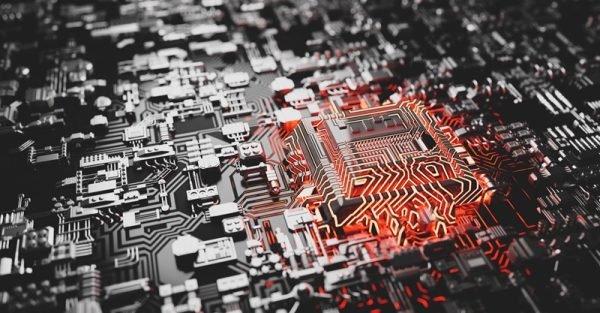
Quantum could help secure IoT networks
- By aya
Last updated on December 31st, 2024
Introduction
The Internet of Things (IoT) is revolutionizing industries, connecting devices, and enabling smarter systems. However, the rapid proliferation of IoT devices has also introduced significant security vulnerabilities. With traditional encryption methods struggling to keep up with increasingly sophisticated cyber threats, quantum computing offers a promising solution. By leveraging the principles of quantum mechanics, quantum technologies could redefine the security landscape for IoT networks. This article explores the current challenges in IoT security, the potential of quantum solutions, and their implications for a more secure digital future.
The Security Challenges of IoT Networks
IoT networks connect billions of devices worldwide, from smart home appliances to industrial systems. While this connectivity drives innovation, it also exposes vulnerabilities that attackers can exploit.
- Limited Device Capabilities: Many IoT devices have constrained computing resources, making it difficult to implement robust security protocols. These limitations leave devices vulnerable to attacks such as unauthorized access and data breaches.
- Scale of Connectivity: The sheer number of interconnected devices in IoT networks creates a vast attack surface. A single compromised device can act as an entry point to the entire network.
- Evolving Threats: Cyber attackers continually develop new techniques to bypass traditional security measures, such as brute force attacks and cryptographic cracking.
- Data Sensitivity: IoT devices often collect and transmit sensitive data, including personal and financial information, which is a prime target for malicious actors.
These challenges underscore the urgent need for advanced security solutions that can protect IoT networks against evolving threats.
How Quantum Computing Enhances IoT Security
Quantum computing harnesses the principles of quantum mechanics, offering capabilities that go beyond classical computing. When applied to IoT security, quantum technologies have the potential to address the most pressing challenges.
-
Quantum Key Distribution (QKD):
QKD enables the secure exchange of encryption keys using quantum properties such as superposition and entanglement. Any attempt to intercept the keys would disturb their quantum state, alerting both parties to the breach. This technology ensures that encryption keys remain secure during transmission, even in vulnerable IoT networks. -
Post-Quantum Cryptography:
Quantum computers have the potential to break traditional encryption algorithms. Post-quantum cryptography involves developing new cryptographic methods that are resistant to quantum attacks. These algorithms can be implemented in IoT devices to future-proof their security. -
Random Number Generation:
Secure encryption relies on the generation of truly random numbers. Quantum random number generators (QRNGs) use the inherent unpredictability of quantum processes to create genuinely random numbers, enhancing the strength of encryption protocols used in IoT networks. -
Enhanced Authentication Mechanisms:
Quantum technologies can improve authentication systems by integrating advanced verification methods that are resistant to spoofing and hacking attempts. This ensures that only authorized devices and users can access the network.
By integrating these quantum solutions, IoT networks can achieve a level of security that is robust against both current and future cyber threats.
Challenges in Implementing Quantum Security for IoT
While quantum technologies hold immense potential, their adoption in IoT networks faces certain challenges:
- Resource Constraints: Many IoT devices lack the processing power to support complex quantum algorithms. Addressing these limitations will require innovations in lightweight quantum solutions.
- High Costs: Quantum technologies are currently expensive to develop and deploy. Scaling these solutions for widespread IoT use will require significant investment and cost reduction.
- Integration Complexity: Integrating quantum security into existing IoT networks involves overcoming compatibility issues and ensuring seamless operation across diverse devices.
- Evolving Standards: The lack of standardized quantum security protocols makes it challenging for industries to adopt consistent and reliable solutions.
Despite these obstacles, advancements in quantum research and collaboration between stakeholders are paving the way for practical implementations.
The Future of IoT Security with Quantum
The integration of quantum technologies into IoT security promises a future where networks are resilient against even the most advanced cyber threats. As quantum computing matures, we can expect:
- Widespread Adoption: Quantum-enhanced IoT security solutions becoming the industry standard, protecting critical infrastructure and consumer devices alike.
- Innovation in Quantum Devices: The development of compact and affordable quantum-enabled devices tailored for IoT environments.
- Stronger Global Collaboration: Governments, academia, and industry leaders working together to establish quantum security standards and accelerate adoption.
- A Secure Digital Ecosystem: IoT networks becoming a cornerstone of a secure and interconnected world, driving innovation while safeguarding user data and privacy.
Conclusion
The vulnerabilities of IoT networks pose a significant challenge in today’s interconnected world. However, quantum technologies offer a transformative solution to these security concerns. By leveraging innovations like quantum key distribution, post-quantum cryptography, and random number generation, businesses and governments can secure IoT networks against evolving cyber threats.
While challenges remain in implementing quantum security, ongoing advancements and collaboration will bridge the gap, making these solutions accessible and practical. As we move toward a future defined by quantum innovation, IoT networks will not only be more secure but also more resilient, fostering a new era of trust in the digital age.
